
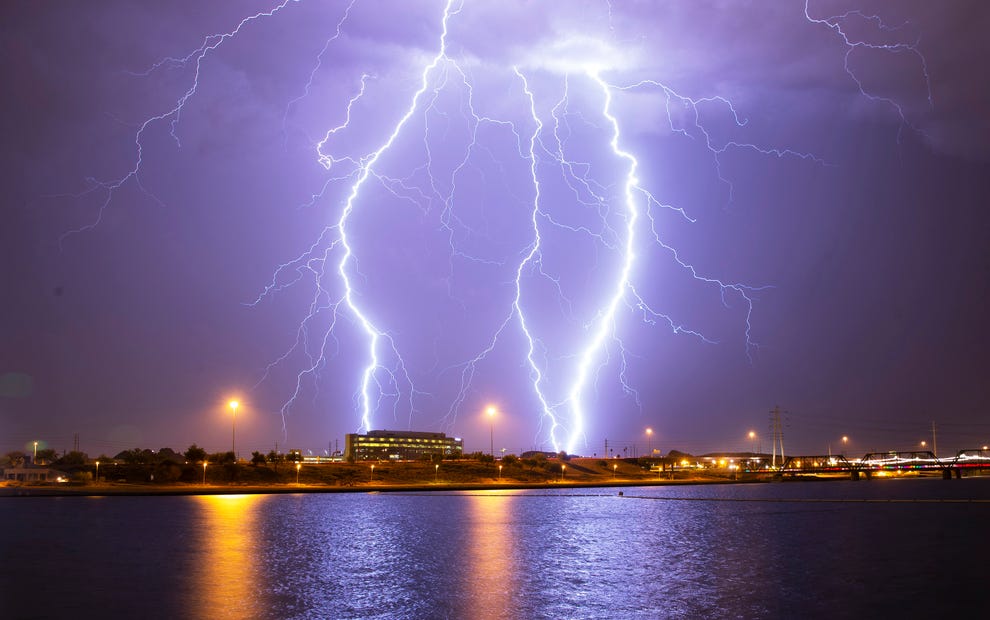
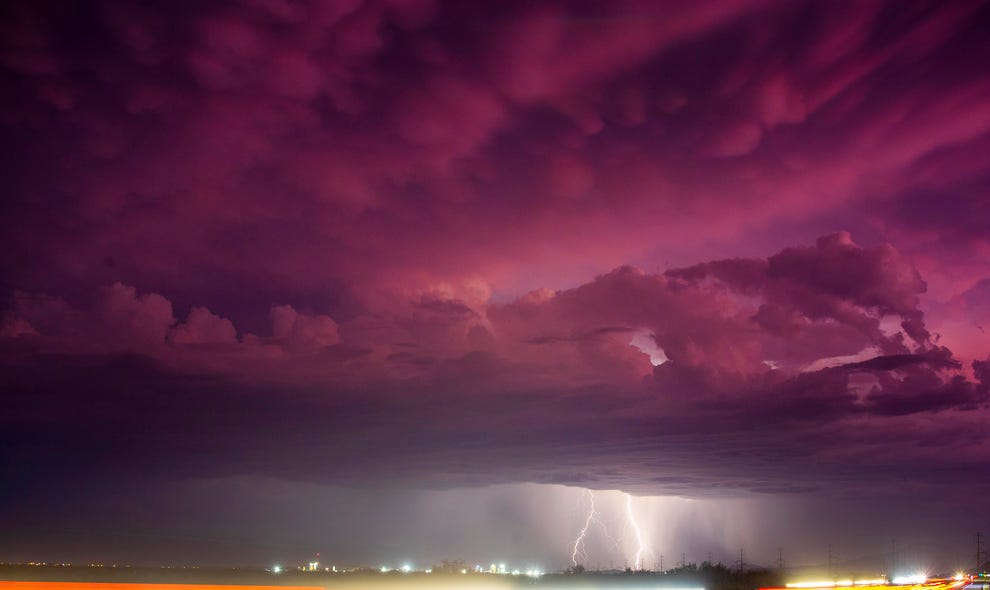
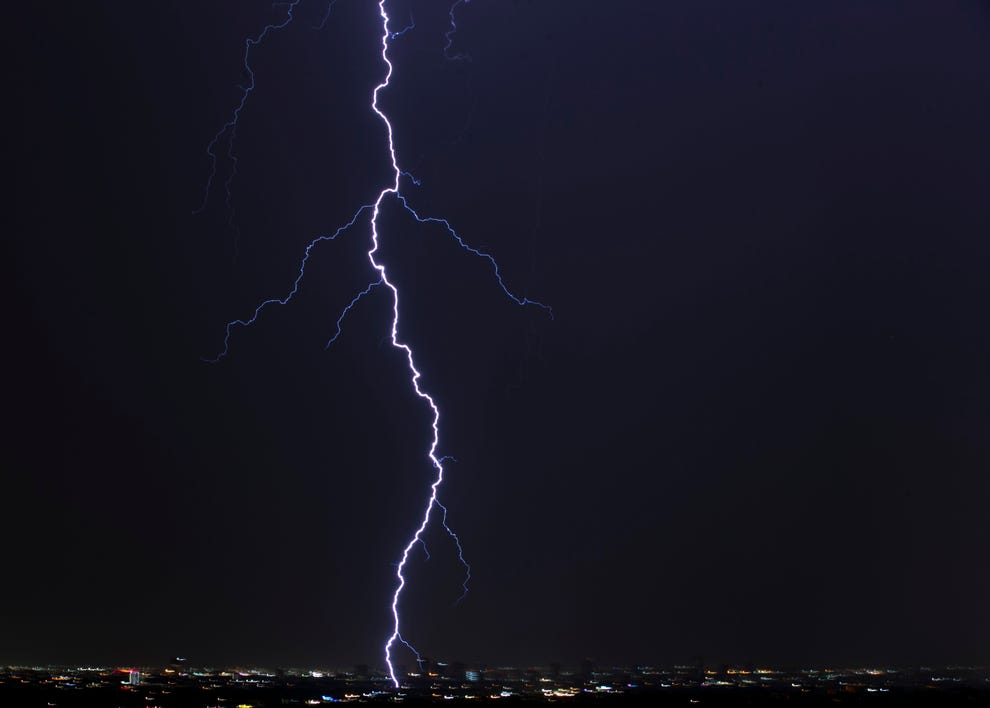
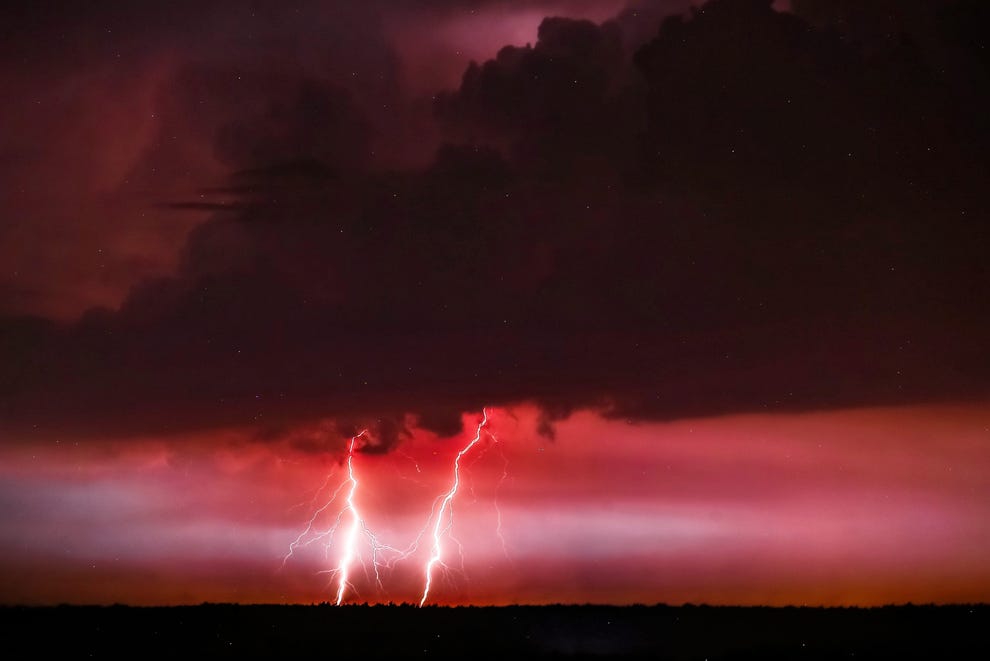
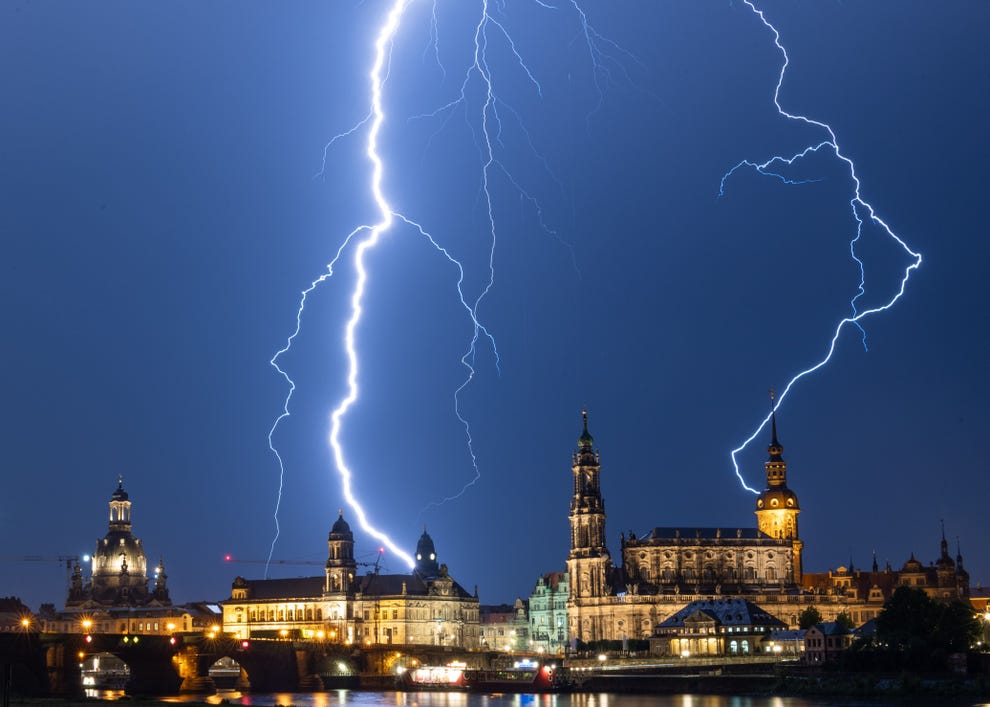
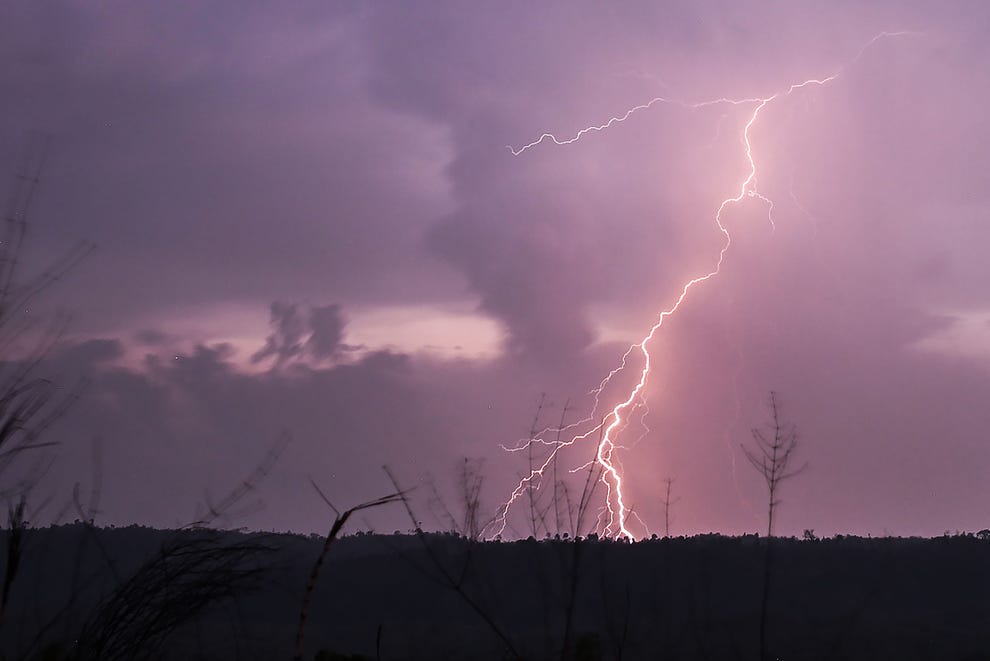




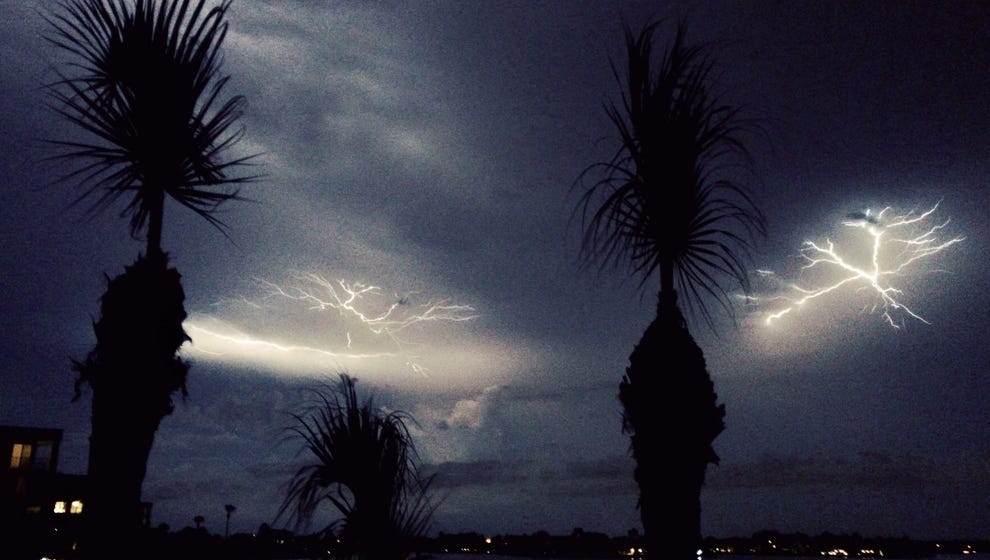
Percy Bysshe Shelley Quotes | |
In the golden lightning Of the sunken sun O'er which clouds are brightening, Thou dost float and run Like an unbodied joy whose race is just begun.
|
"The Cloud" is a major 1820 poem written by Percy Bysshe Shelley. "The Cloud" was written ... Lightning or electricity is the "pilot" or guide for the cloud. Lightning is attracted to the "genii" in the earth which results in lightning flashes. The genii symbolise .
| 517. The Cloud |
| Percy Bysshe Shelley (1792–1822) |
|
Lightning Strikes Twice
Revisiting the Shelleys 200 years after their masterpieces.
BY ERIN BLAKEMORE
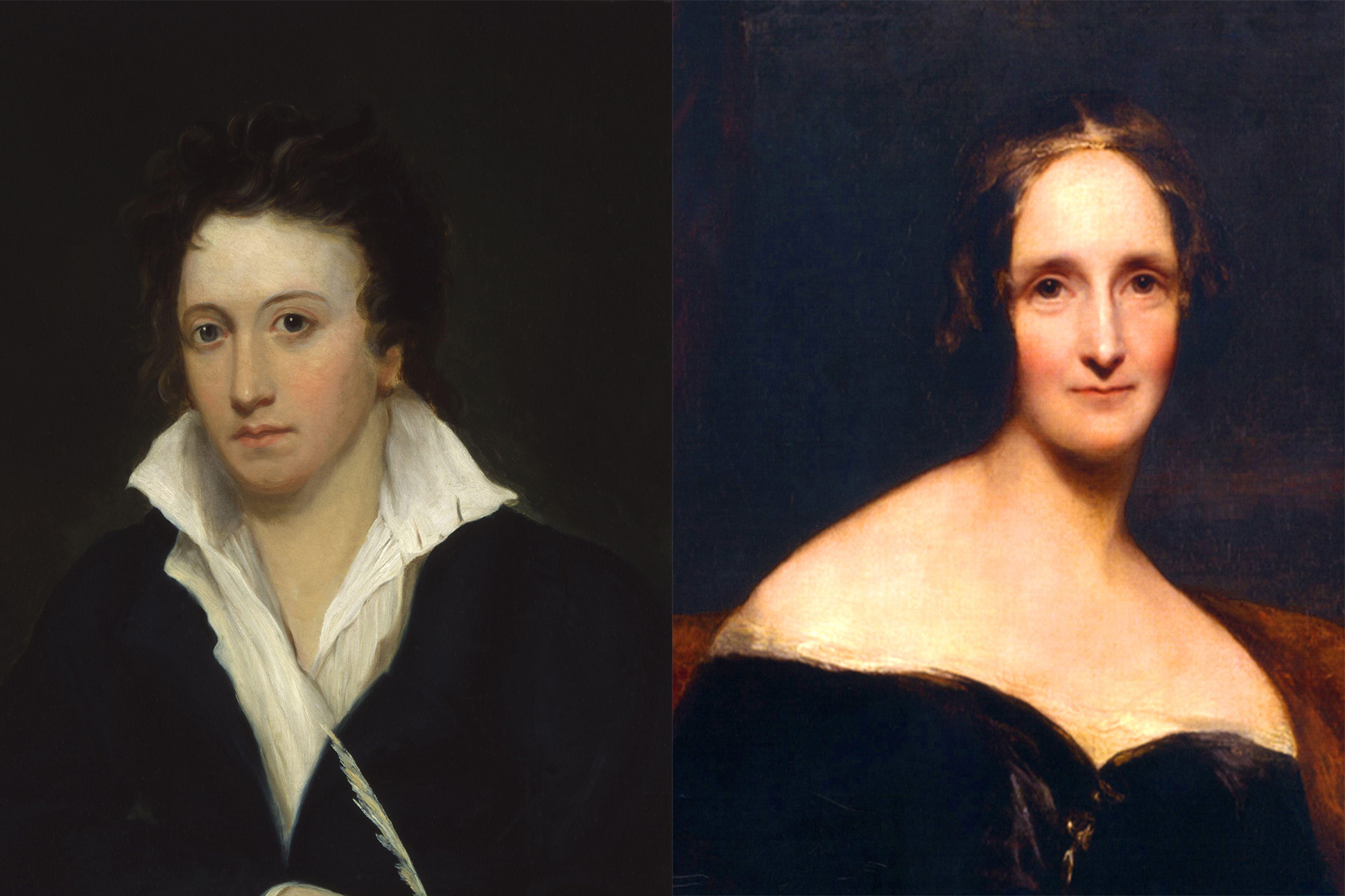
When Ramesses II died in 1213 BCE, the 96-year-old Egyptian pharaoh was so unusually old for ancient times that most of his subjects couldn’t imagine life without him. Some feared that his death meant the end of the world itself. After all, he had reigned for 66 years—long enough that many Egyptians lived and died without ever knowing another ruler. Several centuries later, and thousands of miles away, Ramesses II was resurrected: not in Egypt this time, but in Britain, where he was the subject of an impromptu literary competition that spawned “Ozymandias” one of Percy Bysshe Shelley’s most beloved works and a staple of poetry anthologies.
Two hundred years later, it’s hard to imagine literature without Shelley’s oft-quoted poem. That wasn’t always the case. Were it not for the tireless work of Mary Shelley, Percy’s second wife, collaborator, and posthumous editor, “Ozymandias” would probably be forgotten today. Likewise, Mary’s own work, including her most famous book, Frankenstein, might not exist in its current form without Percy’s encouragement. The potent brew of collaboration, competition, and chaos that fed the Shelleys’ shared literary lives was rare but not singular.
Indeed, literary lightning seemed to strike again and again for the couple, first with Frankenstein; or, the Modern Prometheus, published anonymously in 1818, and then with “Ozymandias,” published a little more than a week later in the January 11, 1818, issue of the Examiner newspaper in London. Both works had their roots not just in genteel, if cutthroat, literary competitions but also in the turbid, six-year marriage that framed the most productive period of the Shelleys’ literary careers.
By the time Percy wrote “Ozymandias,” he and Mary had been in love for four years. They met in 1814 at the home of Mary’s father, philosopher William Godwin, whose commitment to what today might be called anarchism deeply impressed the troubled young poet. Just three years earlier, Percy had been expelled from Oxford University after cowriting and distributing a pamphlet called The Necessity of Atheism, which he refused to disavow or discuss with university officials. He was obsessed with the daring politics and philosophy of first-generation Romantics such as Godwin and Robert Southey, England’s longtime poet laureate. Like his role models, Percy believed that individuals, rather than institutions such as the church or state, should determine their fates. In 1813, he laid out his political views in a privately distributed poem, “Queen Mab,” inspired by Southey’s then-revolutionary stance.
Godwin was the head of a large blended family—he raised five children born to his two wives—and the widower of the feminist thinker Mary Wollstonecraft, who died in 1797. He had hoped that Percy might dig into the Shelley family fortune to support him as a patron. The 22-year-old Percy had fallen out of favor with his aristocratic father, however, and was thousands of pounds in debt. He was also infatuated with Godwin’s 16-year-old daughter, Mary. Godwin tried to nix the budding affair, but the couple ignored his protests and ran off to Europe. Godwin was devastated.
The young couple’s relationship was as toxic as it was passionate. Percy abandoned Harriet Westbrook, his pregnant wife of three years, for Mary, and Mary abandoned the comforts of a conventional life by essentially eloping with her married lover.
She didn’t go alone, however. Her stepsister, Claire Clairmont, craved adventure and accompanied the couple to Continental Europe, which they associated with revolution—the French Revolution had ended a little more than a decade before—and natural splendor. They relied on Claire’s shoddy French and more optimism than money. Mary became pregnant almost immediately.
"It was acting a novel, being an incarnate romance,” Mary recalled later, and the literary partnership that would define her marriage was forged on this foolhardy vacation. During a breakneck six-week tour of France, Switzerland, Germany, and the Netherlands, Mary and Percy read aloud to each other, studied Mary Wollstonecraft’s works, and, between bouts of lovemaking, kept a record of their journey in the margins of each other’s journals.
The trip’s romantic mood soon soured. As Mary struggled with the nausea of early pregnancy, Percy and Claire flitted together from one tourist site to another. (Some biographers suspect they had an affair.) They ran out of money for carriages and had to traverse the countryside on donkeys and, often, on foot. Percy fell further and further into debt. Eventually, the trio slunk back to England. Mary’s father fully disowned her, and she was forced to live with friends while hiding from Percy’s creditors, to whom he owed money for everything from clothing to rent.
Though the couple continued to read and write together in England, Percy encouraged Mary to take another lover in a demonstration of his commitment to free love. (It’s unclear whether she did.) Mary keenly felt her separation from her father and her isolation from polite society. When she gave birth prematurely in February 1815, it was a kind of breaking point. The child died just weeks later, and Mary, perhaps disillusioned by the life she had signed on to, fell into a deep depression. Her journal from the period was either lost or destroyed, so biographers don’t know how her mental state might have affected her writing.
In 1816, Mary’s stepsister suggested that the trio again try their luck in Europe. By then, Mary had another child, three-month-old William, and Claire had a new obsession, 28-year-old George Gordon, Lord Byron, one of the most notorious poets and playboys in Europe. She became one of Byron’s many lovers and, unbeknown to Mary and Percy, was pregnant with Byron’s child.
The Shelleys had never met Byron, but he intrigued them, so Claire insisted that the couple join her and her new paramour on an extended road trip through Europe. Their first stop was Geneva, where Byron, who had been all but run out of England because of his string of scandalous, failed, and allegedly incestuous love affairs, was to spend the summer.
Percy and Byron became immediate friends, and Mary joined them—usually indoors, given the lack of sunshine during the “year without a summer,” in which ash and aerosols from the eruption of Mount Tambora in Indonesia cast a pall of gloomy weather worldwide. It was a hothouse environment of writing, argument, and creative fervor. The couple often joined Byron and his accompanying doctor, John Polidori, for late-night conversations and storytelling. Things turned eerie in Byron’s candlelit drawing room in June 1816. After the friends challenged one another to write a ghost story, Mary produced the beginning of what would become Frankenstein. Although Percy encouraged Mary to expand the story into a complete book, and although many words in the rough draft appear to have come from Percy’s pen, it’s unclear how much he contributed to the final manuscript. Most scholars argue that his contributions were minor edits, many of which Mary rejected. Others, including Charles Robinson, consider Percy’s influence and edits to be significant. (Another modern horror trope was born that night: Polidori’s “The Vampyre.” Though largely unread today, it is considered a forerunner of the vampire genre.)
This spirit of friendly literary competition followed the Shelleys back to England in September 1816. Three months later, they married, following the suicide of Percy’s wife. They rented a house in Marlow, a rural hamlet outside London, christened Albion. Mary hoped the house would be a haven after the peripatetic life they’d led during the first few years of their relationship. She started cowriting a travelogue of her trips throughout Europe with Percy and worked on the expanded manuscript of Frankenstein. Shelley edited and encouraged Mary’s work but focused on his own poetry, including The Revolt of Islam, an epic poem about a fictitious revolution that was published in 1817.
Percy had carte blanche to pursue his passions, but Mary felt hemmed in. “I am … so intolerably restless that it [is] painful to sit still for five minutes,” she wrote to Percy during one of his frequent trips away. Albion was now home to her husband, two babies, Claire and her daughter by Byron, and a seemingly endless cavalcade of friends, children, and servants. Mary was also pregnant with her third child.
Albion could be a claustrophobic environment, and because the Shelleys and their contemporaries lived in a world with no screens, speakers, or smartphones, they had to create their own entertainment. Literary competitions were a lively way to flex their considerable narrative muscles while visiting with guests. These casual competitions, some of which were timed, were usually judged by the participants themselves and pursued for fun rather than publication. Yet, in the intense, fame-hungry subculture of the Romantic poets and their hangers-on, these competitions demanded every iota of artistic firepower each writer could bring.
It’s no surprise that Horace Smith regularly took part in the Shelleys’ literary competitions. He was a famed parodist who, in 1812, struck it big sending up Romanticism’s most recognizable voices. London’s Drury Lane theater had burned three years earlier, and its proprietors offered 50 pounds to the poet who produced an address worthy of being read at the theater’s grand reopening. Its secretary apparently complained to Smith that the applications were all inane. In response, he and his brother James published a series of supposedly rejected entries written in the style of literary lights such as Wordsworth, Coleridge, and Scott. Horace Smith, who later became a stockbroker, prospered with The Rejected Addresses, a book that became wildly popular. (Lord Byron—the poet, not the parody—eventually won the competition.)
Smith and Shelley were fast friends. The parodist described the poet as a handsome, if distracted, gentleman, “one that is gentle, generous, accomplished, brave.” In reality, the Shelleys courted Smith for his generosity. He began to manage the couple’s disastrous finances, lending money to Percy and his fellow poets and artists. And Smith had a special devotion to Mary, whom he supported after Percy’s death and whose finances he also managed for decades.
“I am afraid [Smith] must think me a strange fellow,” Percy reportedly said to his friend Leigh Hunt. “Is it not odd, that the only truly generous person I ever knew, who had money to be generous with, should be a stockbroker! And he writes poetry, too.”
Smith, like Shelley, moved in circles deeply inspired and fascinated by ancient languages and cultures. It was a golden age of grave robbery, marked by high-profile archaeological discoveries, such as the Rosetta Stone in 1799, as well as controversies over whether antiquities, such as those from the Temple of Apollo Epikourios at Bassae, should be brought from Greece to England. In 1801, England fell into an uproar over the British Museum’s acquisition of one of the ancient world’s most treasured works of art, the Parthenon Marbles. The marble sculptures once lined the Acropolis of Athens, ancient Greece’s most important building, and British nobleman Thomas Bruce, the seventh Earl of Elgin, began taking pieces of it to England. Elgin claimed he did so with the blessing of the Ottoman Empire, but debates over the legality and morality of the move have raged ever since. For Byron, the marbles’ presence in England was a scandal and Elgin a criminal whose name would live in infamy.
Percy was fascinated. Mary’s journals, which religiously track her husband’s every movement and visitor, record in characteristic terse fashion that he visited the marbles on January 13, 1817: “On Friday, 13th, spend the morning at the British Museum, looking at the Elgin Marbles.” And though Percy’s reaction wasn’t recorded, scholars believe the visit helped inspire “Ozymandias.”
As Britain continued to wrestle with the ethics of removing art from ancient Greece, other European tomb raiders were hard at work. In 1816, Henry Salt, the British consul to Egypt, dislodged a 7.25-ton statue of Ramesses II from the pharaoh’s family temple and shipped it to England. Word of Salt’s archaeological and engineering feat soon spread. The Shelleys and their coterie eagerly discussed the imminent arrival of the monument, which all the British papers covered. It was the perfect subject for one of the Shelleys’ literary contests.
In late 1817, Percy and Smith embarked on a sonnet competition inspired by news of the Egyptian treasure then en route to England. Percy composed on a sheet of paper scrawled with numbers, perhaps indicating his increasingly perilous financial situation. His was an artistic process in which the sublime, the economic, and the domestic were closely intertwined.
Percy’s sonnet, “Ozymandias,” the Greek name for Ramesses II, begins not with Ramesses’s face, which has sunk into the sand, but with the image of his “vast and trunkless legs of stone.” The poet reflects on what the sand-blasted ruins suggest about the statue’s sculptor before turning his attention to the Egyptian king, whose acts are summed up in a commandment that appears on the broken sculpture’s pedestal: “'Look on my works, ye Mighty, and despair!'”
But the king’s works, like his representation in stone, are buried in the sands of time. The poem ends with an image of the lonely, endless plain of sand that has effaced the king’s accomplishments. Such undoing could happen to anyone, Percy seems to suggest, and in the case of the Egyptian ruler, who is described as a frowning tyrant, obliteration is deserved.
The poem’s ruminations on the ephemerality of fame reveal Percy’s own awareness of how brittle Romanticism, with its fetish for personal glory, was and of how fleeting art can be. It also suggests the hollowness of the British Empire, which expropriated antiquities such as the statue of Ramesses without understanding that its own dominion was imperiled and fading.
The poem Smith wrote for the contest, “On a Stupendous Leg of Granite, Discovered Standing by Itself in the Deserts of Egypt, with the Inscription Inserted Below,” is less awe inspiring. Instead of ruminating on the ephemerality of the creator, it portrays the lonely statue as symbolic of a long-lost city—one that could point to the eventual end of London.
Both poems appeared in the Examiner, published by their mutual friend Leigh Hunt. Although Smith and Percy’s friends likely read the newspaper, the poems didn’t make much of a splash. They were largely ignored until after Percy’s death, when “Ozymandias” took on the added poignancy of its creator’s brief life.
As it turned out, Percy never saw Ozymandias in person. By the time the massive statue reached England in 1818, Percy had decamped permanently to Italy with Mary and Claire, dogged by debts and eager, as always, for a geographic escape from his problems. Percy’s chaotic retinue of family, art, and friends followed him to Europe instead.
In 1822, Percy drowned after a freak boating accident in Italy. He was only 29. Mary, a widow at 25, devoted herself to preserving and championing her husband’s legacy. During most of their marriage, she had played the role of mother and caretaker (of the Shelleys’ four children, only Percy Florence Shelley survived into adulthood), entertaining Percy’s friends and nurturing his literary ambitions. Her own talents, expressed in travelogues and set aside whenever there was business at hand, were often sidelined in favor of Percy, though both wrote, edited, and obsessively read each other’s work.
Mary’s literary prowess was hidden from readers too. Though popular in its day, Frankenstein was published anonymously and only those in the know realized that it was Mary’s work. In 1831, she published a heavily revised version of the book under her own name. It was a kind of public debut, and afterward she pursued a literary career of her own, writing popular travelogues, biographies, and novels. Although she is still best known for her fabulist fiction, her other great achievement was editing and publicizing Percy’s work.
“The ungrateful world did not feel his loss,” she wrote in the preface to her husband’s Posthumous Poems, published in 1824, “and the gap it made seemed to close as quickly over his memory as the murderous sea above his living frame.”
Sorting through the mire of Percy’s papers, which were left in disarray after his untimely death and contained a large cache of fragmentary and unfinished work, was Mary’s way of working through grief. “You cannot imagine how confusing & tantalizing is the turning over Manuscript books,” she wrote to Edward Moxon, who published Percy’s poems beginning in 1838.
Cataloging Percy’s papers was just the beginning of Mary’s battle to resuscitate his literary legacy. Her father-in-law, Sir Timothy Shelley, had often clashed with Percy because of the poet’s unconventional behavior and antiestablishment political views. Sir Timothy saw Mary as part of a distasteful past he wanted to bury along with his son.
But Percy had left behind a son of his own, and Mary and the child depended on Sir Timothy for financial support. Although the elder Shelley was determined to suppress his son’s burgeoning fame, which had been stoked by news of Percy’s tragic drowning, Mary could not afford to anger her benefactor.
Nonetheless, throughout the 1820s, Sir Timothy threatened to cut off Mary and her son if she published Percy’s work. She sorted his papers anyway and begged her father-in-law to let her publish what she had found. Finally, an aged Sir Timothy relented, and in the late 1830s, Mary published an ambitious four-volume edition of Percy’s poetry and a two-volume edition of his prose. It was the culmination of years of dogged detective work and editorial skill.
Mary could never have—and would never have—brushed aside her husband’s legacy in her desire for renown of her own, both because of her devotion to Percy and because of the era’s strict gender norms. Even in her editorial work, which included extensive biographical writing about Percy, Mary held her own on the page. As Percy’s literary executor, she restored his reputation, which had been tattered by his antagonism toward 19th-century social mores. Through commentary that documented her close relationship with Percy, she also ensured that readers realized she was an inextricable part of her late husband’s creative process. Finally, she also ensured that Percy—a relatively unknown poet upon his death—received the posthumous fame she felt he deserved.
Today, the statue of Ramesses II is still on view at the British Library, the crown jewel of a massive collection of Egyptian artifacts. And the Shelleys’ intertwined legacy is still the stuff of literary legend. The “lone and level sands” of time and a fickle public may yet sink the Shelleys, but for now, two centuries after the creation of “Ozymandias” and the publication of Frankenstein, it’s difficult to imagine a world without them.
Originally Published: January 22nd, 2018
Erin Blakemore is a journalist from Boulder, Colorado. She writes about history, literature, culture, and science for publications such as The Washington Post, Smithsonian and JSTOR Daily. Her first book, The Heroine's Bookshelf, won a Colorado Book Award for Nonfiction.
No comments:
Post a Comment